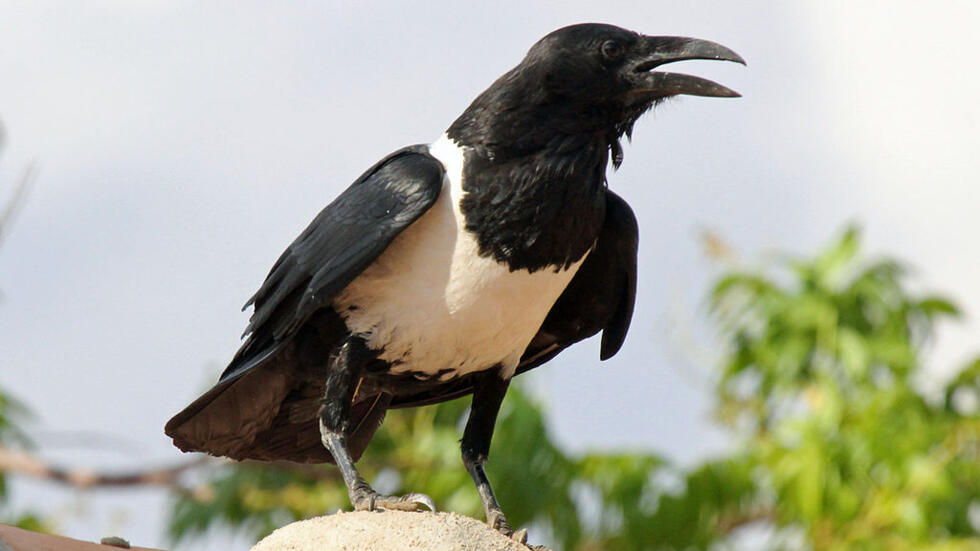‘Rotten eggs’ teach cocky crows not to rob nests in South Africa
Scientists in South Africa have managed to persuade pied crows that it’s a bad idea to rob eggs from other birds’ nests -- by tricking them into stealing eggs that taste nasty. It is hoped this could turn into a conservation tool for endangered shorebirds.
Issued on: Modified:

The study was carried out at the Berg River Estuary by Zimbabwean conservation biologist Angela Ferguson and colleagues from the University of Cape Town's FitzPatrick Institute of African Ornithology.
"The crows are a problem, they’re quite the bullies," acknowledges Ferguson. Wanting to find an alternative to killing them, and to protect the vulnerable species that they prey on, she and the team set up artificial nests at six test sites on the estuary and placed Japanese quails’ eggs -- with altered contents -- inside the nests to trick the crows into believing they were plovers' eggs.
Pied crows are a native species whose numbers have grown in the south-west of South Africa due to climate change and urbanisation. They annoy sheep farmers by preying on lambs and they harass bigger birds like eagles, kites and buzzards.
Some sheep farmers have taken matters into their own hands, shooting or poisoning the crows. But that lethal control can trigger a public backlash and it doesn’t always work.
Vulnerable species
For the study, scientists placed quail eggs fortified with a safe emetic into nests disguised to look like those of the Kittlitz's Plover, a small wading bird whose eggs the pied crows love to steal.

Ferguson and her team first emptied the quail eggs and re-filled them with a mixture of egg and carbachol, an emetic. The carbachol, administered in non-lethal doses, was just strong enough to make the crows queasy after devouring an egg. That way they learnt to associate their action with being sick.
“The method takes advantage of the crow’s ability to learn because we know that crows are intelligent creatures,” Ferguson told RFI.
She said the chemical causes a short-lived illness that has no long-term effects on the health of the crows.
"The dosage has to be very strictly controlled. It’s a chemical that has been used on other species of crow and ravens."
Her study was published in the latest issue of the Journal for Nature Conservation. Ferguson and her co-authors found that the survival rate of artificial plover nests increased by 45.9 percent at three of the research sites that had contained carbachol-treated eggs.
Where nests contained eggs refilled with only water -- at three control sites -- nest survival rates decreased.
First of its kind
“This was a first study of its kind that we knew of in the region. It is encouraging that it does work for pied crows. We know they can be trained to avoid nests,” Ferguson said.
Researchers say warmer weather in the south-west of South Africa is helping pied crows to extend their range there from further north. Also, man-made structures such as electricity power lines have provided the birds with nesting sites in the treeless scrublands of the Western Cape province.

Case by case basis
Public perception of pied crows in South Africa and elsewhere in the region is mixed -- but Ferguson and others know that they are “a part of the southern African skies.”
Christiaan Brink, a project manager for conservation group BirdLife South Africa told RFI the concept tested by Ferguson and her colleagues, known as conditioned food aversion, could prove to be a tool in managing the pressures posed by expanding pied crow populations.
But he said more research would be needed before it could be implemented further.
He added: "As with most conservation interventions, implementation needs to be carefully considered on a case-by-case basis."
Daily newsletterReceive essential international news every morning
Subscribe